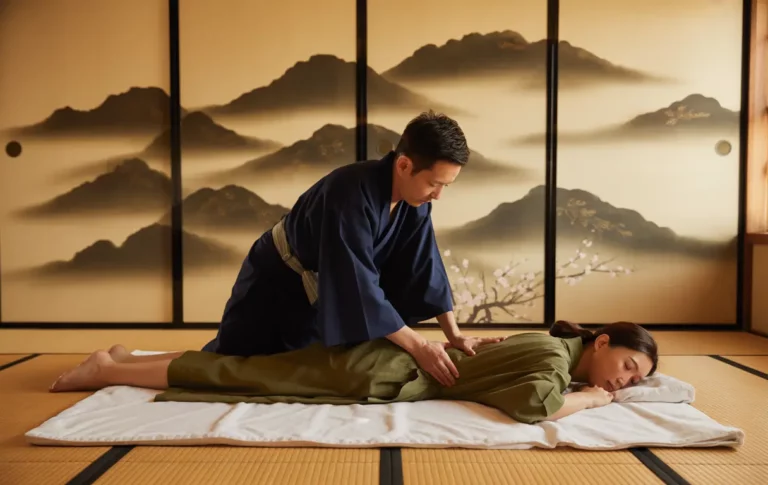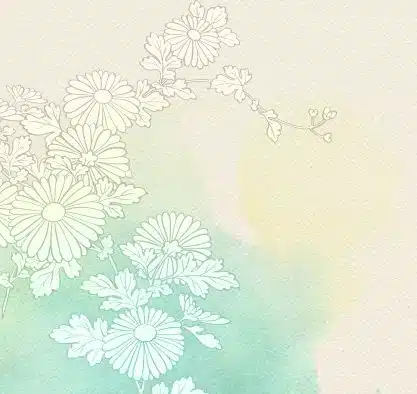I had never thought a simple touch could lead one to unlock a whole philosophy until I watched a shiatsu therapist in Tokyo apply gentle finger pressure along someone’s back. As her fingers glided over the person’s back, their entire body began to soften and relax. That moment has stayed with me, and it was the beginning of my fascination with what one could learn inside a shiatsu massage school.
Most of us only view a massage as a luxury treatment you book when you’re on holiday or stressed. However, Shiatsu massage is different. It’s a distinctive healing art rooted in Japanese culture and Traditional Chinese Medicine with elements of finger pressure, energy flow, and holistic philosophy to heal both body and mind. Unlike body manual therapy, it’s a very intuitive type of acupressure massage that relieves muscle discomfort, balances energy channels, and improves posture.
To truly understand the essence of Shiatsu, one must go to where it all began: Japan.
This is why anyone wishing to study shiatsu massage in Japan undergoes such a transformative journey. This is true for any wellness enthusiast, bodywork practitioner, or even those curious about oriental medicine. From half-day workshops to full-time national certification programs offered at Japan Shiatsu College and other institutions, Japan offers the most authentic training.
I am going to cover programs offered, enrollment steps, visa and language prerequisites, and highlight some standout schools. If you are a foreigner looking to visit or considering a career as a shiatsu professional, this article will guide you in finding your way.
Table of contents
- What Exactly Is Shiatsu?
- Can Foreigners Study Shiatsu in Japan
- How To Qualify for a National Shiatsu License in Japan
- Cost and Requirements
- Do You Need a License To Practice Abroad?
- Short-Term Shiatsu Massage School vs Full Licensing Programs
- Best Shiatsu Massage Schools in Japan for Foreigners
- How To Choose the Right Shiatsu Massage School
- What Studying in Shiatsu Massage School Might Cost
- How To Access Authentic Shiatsu Massage in Singapore
What Exactly Is Shiatsu?
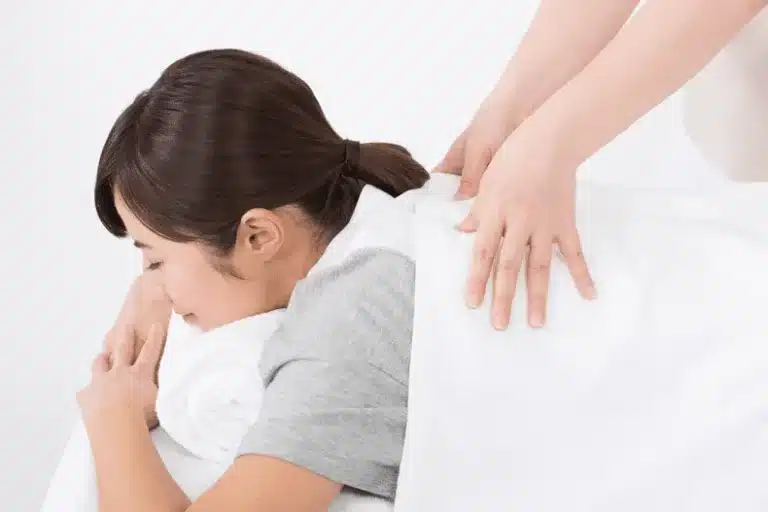
Shiatsu, which translates to finger pressure, took root in Japan during the early 1900s. The work of Tokujiro Namikoshi fused the practice with Traditional Chinese Medicine ideas like meridians, while later teachers such as Shizuto Masunaga splashed on Western anatomy. Gradually, the system sprouted different branches, including Zen Shiatsu, Meridian Shiatsu, and Tao Shiatsu.
Instead of just masking pain, a real Shiatsu session seeks to set the body’s energy river back in motion. Thumbs, palms, elbows-even the fingertips-press into tight spots to untangle muscles and perk up overall mood. Many folks walk away surprised at how their posture straightens, their fatigue melts, and a simple delight seeps back into the day.
You can book a Shiatsu appointment almost anywhere these days, but traveling to Japan for training puts you in the rooms where the style was born. Enrol in a shiatsu massage school in Japan and you dont just learn acupressure points; you soak in traditions the screen never shows. Classes move at a laid-back pace, with quiet moments that let you feel the energy shift between student and teacher.
Can Foreigners Study Shiatsu in Japan
Absolutely, foreigners can learn Shiatsu in Japan. Plenty of massage schools run short courses that even a curious tourist can jump into. Workshops vary from quick half-day demos to six-month, weekend-only deep dives. Many of these programs are aimed at people who don’t speak a word of Japanese. A few schools offer classes in English, and if they don’t, an in-house translator is often ready to help. The instructors are usually pretty welcoming to overseas students, and some centres even tailor their lessons for international groups hoping to sharpen their skills. One catch, though: anyone wanting to practice Shiatsu professionally here will need a long-term visa and must be fluent enough in Japanese to tackle a three-year accredited curriculum.
How To Qualify for a National Shiatsu License in Japan
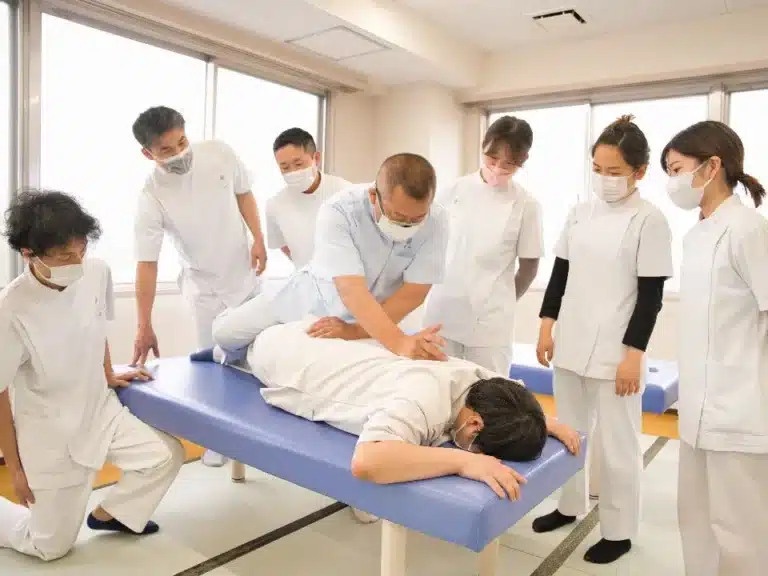
Alright, so if you really want to go all-in and snag an actual shiatsu license while living in Japan, you have to follow a pretty clear game plan. The first step is getting into a school that the Ministry of Health, Labour and Welfare has given its stamp of approval.
That school has to stick to tight rules about what gets taught and how many clinic hours students put in. You also need proof that you’ve finished about 12 years of school back home, usually the same as a high school diploma. Once you’re accepted, you’re looking at three full years of classes, practice, and late-night cramming. The national credential people call it the Anma Massage Shiatsu Practitioner license, and they aren’t kidding around. The test bundle includes both written quizzes and hands-on demos, so you’ll be massaging mannequins, dolls, or fellow students while the examiners stare.
Get past all that, though, and the respect that badge brings is solid inside Japan and pretty useful if you ever open a clinic back home. Plus, saying you trained in Tokyo just plain sounds awesome to just about everybody.
Cost and Requirements
Okay, time for the nitty-gritty: if you want a national shiatsu license in Japan, you really, really need to speak Japanese basically every day. We’re talking at least that JLPT N2 badge because the classes, the books, even the final tests, of course, medical terms, anything to do with muscles or bones, and regular street vocab won’t cut it. You’ll also need a student visa, which is the ryugaku status the government gives to people enrolled in full-time, in-person training. Most shiatsu schools walk you through the paperwork after they say yes, but you’ll have to show bank statements, pay stubs, or scholarship letters so immigration can see the money is there long before you board the plane. Prepare for three years of tuition that starts around ¥3,000,000 (USD $20K) and can creep up to ¥3,500,000 (USD $24K). Rent, groceries, train fare, and a couple of decent bowls of ramen pile on top of that total fast. A handful of programs break the bill into easier monthly chunks or hand out small merit-based awards, yet the overall number still stares you in the face. If your heart is set on living in an expensive city like Tokyo or Osaka, triple-check your budget, then double-check it again.
Do You Need a License To Practice Abroad?
Quick heads-up: if you want to give shiatsu massages legally in Japan, you absolutely need a license. The official Anma Massage Shiatsu Practitioner card is what makes it okay to work on clients. The rule keeps the practice safe and stops people with no real training from calling themselves professionals. Things get flip-flopped the moment you leave Japan, though. In places like the U.S., the U.K., or Singapore, shiatsu sometimes slides under whatever general massage laws exist, or, honestly, no laws at all. Lots of travellers study shiatsu for a few weeks in Tokyo, then add the moves to wellness gigs at spas or yoga studios back home. If you’re thinking of using shiatsu as a paycheck, double-check the rules where you live. A Diploma from a Japanese school doesn’t promise you can practice legally, but it looks great on a wall and tells clients you’ve been taught by the folks who invented it.
Short-Term Shiatsu Massage School vs Full Licensing Programs
Not everybody has the time or cash to live in Japan for three whole years, and that really is okay. If you’re just passing through and want a taste of shiatsu, a bunch of short courses have you covered. Some classes last only three hours, while a few push on for a full week, so you can pick whatever fits your schedule. Most schools bring in an interpreter, and quite a few teach the whole thing in English, which takes the language stress out of the mix. When you finish, you walk away with a certificate, and even if it never goes on a job application, it’s a cool thing to show your friends. Beauty professionals, yoga teachers, and plain old curious tourists love these crash courses, though they dont turn anyone into a licensed pro. Still, you leave knowing the basics-posture, pressure, and that funny feeling some call energetic awareness. A shiatsu massage school crash course like this can be the perfect starting point before deciding whether to pursue full certification.
Best Shiatsu Massage Schools in Japan for Foreigners
Thinking about studying Shiatsu in Japan? Great idea, but pick your school carefully. Lots of people finish a course only to discover their new diploma doesn’t mean much back home. Four well-known centres spring to mind, and each one feels a bit different. Some lean on hands-on practice, others blend in lectures or even online lessons. Check how much English they use and what kind of certificate you will walk away with. Doing that homework saves a lot of last-minute stress.
Japan Shiatsu College (Tokyo)
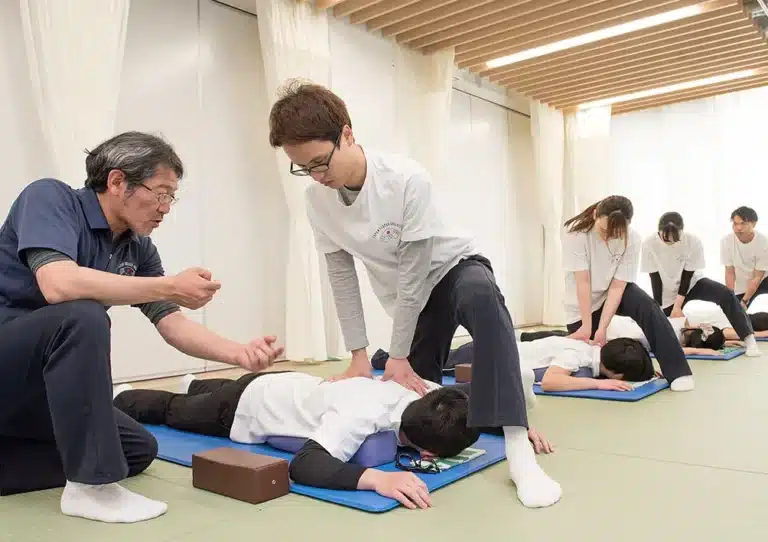
Japan Shiatsu College opened its doors back in 1940, so it has been around a long time. Students trust the place because its track record is pretty much unbeatable. The staff sticks closely to the old-school Namikoshi methods, refusing to rush into trendy shortcuts. If a study group is hunting for certified pros who teach the craft exactly as the government signed off on, this is often the first name that pops up.
Key points:
- English support: Classes are conducted in Japanese. Students must arrange their own interpreter (anatomical terminology required).
- Class format: Group lessons only (minimum 4 participants).
- Teaching materials: English and French textbooks are available for purchase.
- Course length: Minimum of 3 hours (flexible based on consultation).
- Estimated cost:
- Tuition: ¥6,600 per hour (approx. USD $45)
- Certificate of Completion (optional): ¥5,500 (approx. USD $37)
- English textbook: ¥1,500 (approx. USD $10) / French textbook: ¥2,000 (approx. USD $13)
- Tenugui (2 towels): ¥1,200 (approx. USD $8)
- Certification: Certificate of Completion available upon request (additional fee; not a national qualification).
- Notes: Reservations must be made at least two months in advance. Group payment only. No refunds after payment.
Iokai Shiatsu Center (Tokyo)
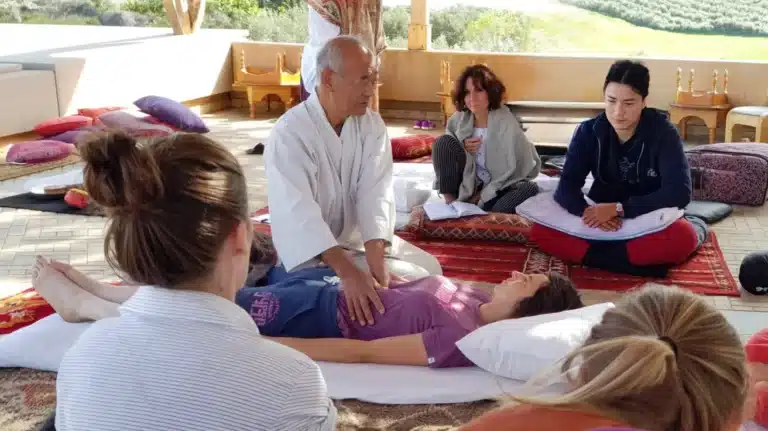
Students at the Iokai Shiatsu Center learn Zen Shiatsu, a hands-on style that mixes classic bodywork with quick breathing tricks and a touch of Eastern psychology. The program is a good fit for anyone who wants to dig deeper into Ki energy and play around with simple Zen ideas.
Key points:
- English support: Interpreter provided (interpreter fees shared among participants).
- Class format: Group lessons only (groups must be independently organised).
- Teaching materials: Classes in Japanese with interpreter support (no official English textbook).
- Course length: Standard intensive course: 5 consecutive days (1–5 days flexible for 3–15 participants).
- Estimated cost: Varies based on course length; interpreter fees are additional (expect around ¥40,000–¥80,000 / approx. USD $270–$540).
- Certification: No official certification for short-term courses.
- Notes: Each group must appoint a representative for communication. Japanese speakers may join regular classes.
Tao Shiatsu Center Kyoto
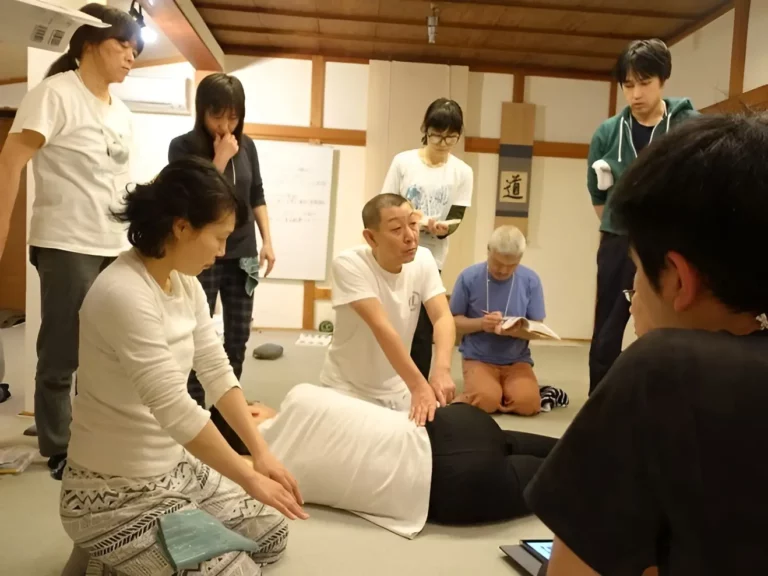
The Tao Shiatsu Center over in Kyoto runs a one-of-a-kind course that mixes hands-on bodywork with bits of Buddhist wisdom. Trainees spend their days learning to pair the flowing energy called Ki with real moments of kindness and clear, honest intent.
Key points:
- English support: Courses conducted entirely in Japanese.
- Class format: Group lessons (one weekend per month, Saturday and Sunday).
- Teaching materials: Textbook and DVD (Japanese only) to be purchased separately.
- Course length: Basic Course’s entire duration is 6 months (12 days total).
- Estimated cost: ¥96,000 for the Basic Course (approx. USD $670).
- Certification: To become a certified Tao Shiatsu Therapist, one must pass exams and undergo ongoing, long-term training.
- Notes: Private lessons are not mentioned. The curriculum is designed for group participation.
Shiatsu Tokyo
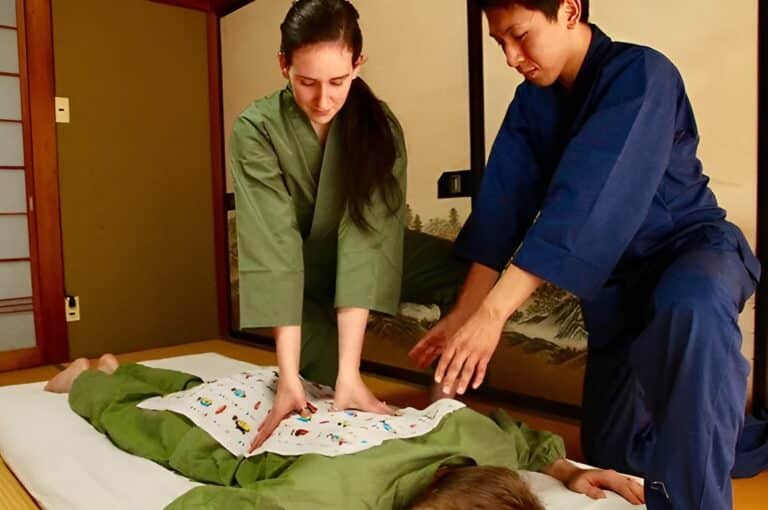
Shiatsu Tokyo runs a straight-up, no-nonsense beginner course for anyone curious about the art of Japanese bodywork. The program happens over a weekend or two, so you’re not signing your life away. A nationally certified teacher walks you through the basics, and the vibe stays very hands-on from start to finish.
Key points:
- English support: Classes are conducted in English.
- Class format: Very small group (maximum 2 students).
- Teaching materials: English textbook and instructional video included.
- Course length: Half-day (3 hours), morning or afternoon sessions.
- Estimated cost: Provided upon inquiry, typically several tens of thousands of yen (around USD $200–$300), including a $500-value video course.
- Certification: Certification of completion will be provided (not a national qualification).
- Notes: Focus on posture, pressure techniques, and basic treatment flow. Not a professional licensing program.
How To Choose the Right Shiatsu Massage School
So you’re gearing up to study shiatsu over in Japan, and the big question pops up: how do you pick the right school? It makes sense to start by hunting down the credentials. Skip anyone who claims to teach shiatsu but skips the hands-on part, and double-check that the instructors hold licenses from the Japanese government. Real pros dont mind showing off their diplomas, and teachers who’ve worked with foreign students usually know how to break things down.
Class size matters more than you think, too. A tiny group lets the teacher look at your palms instead of just calling your name, and that kind of personal shout-out can switch a move from awkward to fluid.
Translation is another piece of the puzzle. Some curricula roll out in English right away, while others assume everyone is fluent in Japanese characters, so ask ahead, or you might be squinting at the board and nodding a lot.
Why you’re there also shapes your choice. Go-getters aiming for a license should find a program that lays out each step like a map, but folks who just want to kick the tires on shiatsu can sign up for a weekend workshop and leave happy.
What Studying in Shiatsu Massage School Might Cost
Here’s a quick summary of what you might pay for shiatsu training in Japan:
| Shiatsu School | Estimated Cost |
|---|---|
| Japan Shiatsu College | ¥6,600/hour (approx. USD $45), minimum 3 hours. Additional fees apply for Certificate of Completion and textbooks. ➔ Total estimate: ¥30,000–¥50,000 (approx. $200–$330). |
| Iokai Shiatsu Center | Varies depending on course length and interpreter fees. ➔ Estimate: ¥40,000–¥80,000 (approx. $270–$540). |
| Tao Shiatsu Center Kyoto | ¥96,000 for the six-month Basic Course (approx. USD $670). Payment plans are available. |
| Shiatsu Tokyo | Several tens of thousands of yen (approx. USD $200–$300) for a half-day intensive course. |
Additional Costs to Consider:
- Interpreter fees (for schools that require them)
- Travel and accommodation
- Textbooks and course materials
- Certificate issuance fees (if applicable)
※ Students who intend to sit for the national Anma-Massage-Shiatsu Practitioner examination must enrol in a three-year program offered by a government-accredited vocational school. Total tuition and related expenses are estimated at around ¥3,000,000–¥3,500,000 (approximately USD $20,000–24,000).
How To Access Authentic Shiatsu Massage in Singapore
For plenty of folks obsessed with wellness, Shiatsu massage school in Japan feels like the ultimate bucket-list item. The classes are hands-on, the history is deep, and the vibe is something you really can’t find anywhere else on the planet. You can pick a speedy one-day workshop in Tokyo, stretch it into a six-month study in Kyoto, or tackle the full three-year route until you’re a nationally certified pro.
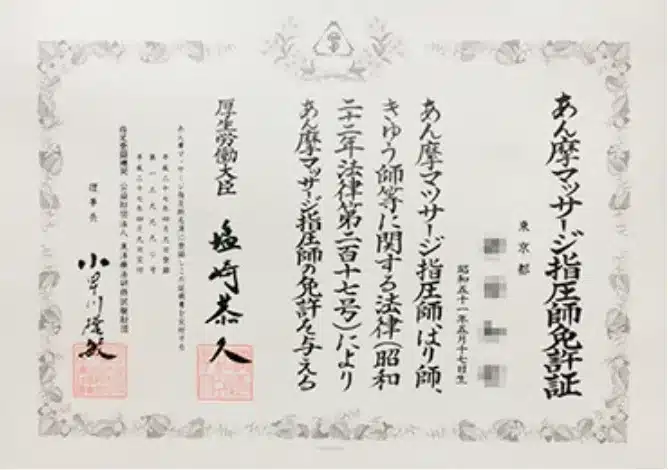
If packing a suitcase right now sounds like a stretch, Singapore has its own answer: Ikeda Spa. Our in-house trainer here is nationally accredited in Shiatsu by the Japanese government, so the relief you get on the table is the real deal.
Wondering what authentic Shiatsu feels like under your back? Booking a single appointment at Ikeda is way easier than hopping on a plane, and it’s a perfect warm-up before you think about studying overseas.

